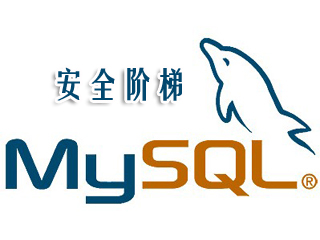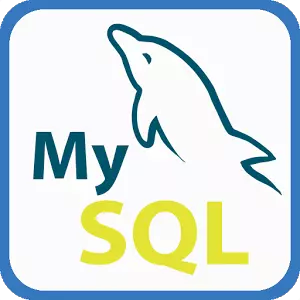10 recommended articles about the mysql_query() function
When using PHP to obtain the table field name, it is implemented through the mysql_field_name() function. The syntax format of this function is as follows: string mysql_field_name (resource $result, int $field_offset) The mysql_field_name() function will return the name of the field of the specified index. It The parameters are described below. l result: the result set returned after the mysql_query() function is executed. l field_offset: The offset of the field, the starting value is zero. The sample code for PHP to obtain table field names using the mysql_field_name() function is as follows: In the above PHP code for obtaining table field names, the first field name and the second field name can be output. http://www.bkjia.com/PHPjc/445930.htmlwww.bkjia.comtruehttp://www.bkjia.com/PHPjc/445

Introduction: Use PHP to obtain table field names through the mysql_field_name() function Implementation, the syntax format of this function is as follows: string mysql_field_name (resource $result, int $field_offset) mysql_field_name() function will return the name of the field of the specified index, and its parameters are described as follows. l result: the result set returned after the mysql_query() function is executed. l field_of...
2. mysql_field_type() function content recommendation

Introduction: Definition and usage mysql tutorial_field_type() function returns the type of the specified field in the result set. Returns the type of the specified field if successful, or false if failed. Syntax mysql_field_type(data,field_offset) Parameter Description data Required. The data pointer to use. The data pointer is the result returned from mysql_query(). field_offset required. Indicates which field to start returning from...
3. Recommended articles about mysql_field_flags

Introduction: Definition and Usage The mysql_field_flags() function returns the flags of the field records. This function gets the field data from the mysql_query() function and returns a string on success, or FALSE, or on failure when there are no more rows. Possible return values: auto_intcrement -1 if a UTO_INCREMENT binary is set -1 if the field has a binary attribute set blob -1 if the field is a B LOB enumeration -...
4. Recommended articles about mysql_field_seek

##Introduction: The role of mysql_field_seek is in mysql_query In the returned record set, adjust it to the record we specified. If there is, the current record will be returned. If not, it will be false; mysql_field_seek syntax: mysql_field_seek (data, field_offset) Parameters: data: must refer to the data set returned correctly by mysql_query.field_offset: Specify the location. Start looking at mysq from 0 without writing code...
5. Recommendations on the usage of the mysql_field_name() function

Introduction: Using PHP to obtain the table field name is implemented through the mysql_field_name() function. The syntax format of this function is as follows: string mysql_field_name ( resource $ result, int $field_offset) The mysql_field_name() function will return the name of the field of the specified index. Its parameters are described as follows. l result: the result set returned after the mysql_query() function is executed. l field_of...
6. 10 recommended articles about the mysql_field_flags() function

Introduction: Definition and Usage The mysql_field_flags() function returns the flags of the field records. This function gets the field data from the mysql_query() function and returns a string on success, or FALSE, or on failure when there are no more rows. Possible return values: auto_intcrement -1 if a UTO_INCREMENT binary is set -1 if the field has a binary attribute set blob -1 if the field is a B LOB enumeration -1 if the field...
7. Mysql_fetch_field function instance usage summary

##Introduction: mysql_init initialization Database link – get a link mysql_real_connect connects to the database server and executes mysql_query query – the query statement is a string to retrieve each row separately mysql_store_result – the result is stored in the link and is a one-time query. From the result set, get the header information – mysql_fetch_fields – table The header information is stored in the memory space pointed to by the MYSQL_FIELD type pointer to parse the table header –mysql_...
8. Summary of usage of the mysql_fetch_field() function

Introduction: mysql_init initializes the database link – gets a link mysql_real_connect connects to the database server and executes the mysql_query query – the query statement is a string for each Retrieve each row separately mysql_store_result – the results are stored in the link, which is a one-time query. Obtain the header information from the result set – mysql_fetch_fields – the header information is stored in the memory space pointed to by the MYSQL_FIELD type pointer. Parse the header – mysql_...
9. 10 recommended articles about mysql_fetch_assoc()

10.
About mysql_fetch_array() Recommended 10 articles on functions
 ##Introduction: How to operate MySQL database with PHP - using the mysql_fetch_array() function Get information from an array result set The mysql_fetch_array() function fetches a row from the result set as an associative array, a numeric array, or both. Returns an array based on the rows fetched from the result set, or false if there are no more rows. In the previous article "Using the mysql_query() function to execute SQL statements (Method 3 of PHP operating MySQL database)", mysql_que was introduced...
##Introduction: How to operate MySQL database with PHP - using the mysql_fetch_array() function Get information from an array result set The mysql_fetch_array() function fetches a row from the result set as an associative array, a numeric array, or both. Returns an array based on the rows fetched from the result set, or false if there are no more rows. In the previous article "Using the mysql_query() function to execute SQL statements (Method 3 of PHP operating MySQL database)", mysql_que was introduced...
[Related Q&A recommendations]:
node.js - Asynchronous problem of MYSQL in node
mysql - php operates on the database, using both procedural and objectified words. Same code?
#node.js - The execution order of nodejs query database is not right. . How to query
#php synchronously with the same value arranged together?
javascript - Why can't the IF statement be used to directly determine the return value of the mysql_query function?
The above is the detailed content of 10 recommended articles about the mysql_query() function. For more information, please follow other related articles on the PHP Chinese website!

Hot AI Tools

Undresser.AI Undress
AI-powered app for creating realistic nude photos

AI Clothes Remover
Online AI tool for removing clothes from photos.

Undress AI Tool
Undress images for free

Clothoff.io
AI clothes remover

Video Face Swap
Swap faces in any video effortlessly with our completely free AI face swap tool!

Hot Article

Hot Tools

Notepad++7.3.1
Easy-to-use and free code editor

SublimeText3 Chinese version
Chinese version, very easy to use

Zend Studio 13.0.1
Powerful PHP integrated development environment

Dreamweaver CS6
Visual web development tools

SublimeText3 Mac version
God-level code editing software (SublimeText3)

Hot Topics
 1387
1387
 52
52
 How to open phpmyadmin
Apr 10, 2025 pm 10:51 PM
How to open phpmyadmin
Apr 10, 2025 pm 10:51 PM
You can open phpMyAdmin through the following steps: 1. Log in to the website control panel; 2. Find and click the phpMyAdmin icon; 3. Enter MySQL credentials; 4. Click "Login".
 MySQL: An Introduction to the World's Most Popular Database
Apr 12, 2025 am 12:18 AM
MySQL: An Introduction to the World's Most Popular Database
Apr 12, 2025 am 12:18 AM
MySQL is an open source relational database management system, mainly used to store and retrieve data quickly and reliably. Its working principle includes client requests, query resolution, execution of queries and return results. Examples of usage include creating tables, inserting and querying data, and advanced features such as JOIN operations. Common errors involve SQL syntax, data types, and permissions, and optimization suggestions include the use of indexes, optimized queries, and partitioning of tables.
 How to use single threaded redis
Apr 10, 2025 pm 07:12 PM
How to use single threaded redis
Apr 10, 2025 pm 07:12 PM
Redis uses a single threaded architecture to provide high performance, simplicity, and consistency. It utilizes I/O multiplexing, event loops, non-blocking I/O, and shared memory to improve concurrency, but with limitations of concurrency limitations, single point of failure, and unsuitable for write-intensive workloads.
 MySQL's Place: Databases and Programming
Apr 13, 2025 am 12:18 AM
MySQL's Place: Databases and Programming
Apr 13, 2025 am 12:18 AM
MySQL's position in databases and programming is very important. It is an open source relational database management system that is widely used in various application scenarios. 1) MySQL provides efficient data storage, organization and retrieval functions, supporting Web, mobile and enterprise-level systems. 2) It uses a client-server architecture, supports multiple storage engines and index optimization. 3) Basic usages include creating tables and inserting data, and advanced usages involve multi-table JOINs and complex queries. 4) Frequently asked questions such as SQL syntax errors and performance issues can be debugged through the EXPLAIN command and slow query log. 5) Performance optimization methods include rational use of indexes, optimized query and use of caches. Best practices include using transactions and PreparedStatemen
 Why Use MySQL? Benefits and Advantages
Apr 12, 2025 am 12:17 AM
Why Use MySQL? Benefits and Advantages
Apr 12, 2025 am 12:17 AM
MySQL is chosen for its performance, reliability, ease of use, and community support. 1.MySQL provides efficient data storage and retrieval functions, supporting multiple data types and advanced query operations. 2. Adopt client-server architecture and multiple storage engines to support transaction and query optimization. 3. Easy to use, supports a variety of operating systems and programming languages. 4. Have strong community support and provide rich resources and solutions.
 Monitor Redis Droplet with Redis Exporter Service
Apr 10, 2025 pm 01:36 PM
Monitor Redis Droplet with Redis Exporter Service
Apr 10, 2025 pm 01:36 PM
Effective monitoring of Redis databases is critical to maintaining optimal performance, identifying potential bottlenecks, and ensuring overall system reliability. Redis Exporter Service is a powerful utility designed to monitor Redis databases using Prometheus. This tutorial will guide you through the complete setup and configuration of Redis Exporter Service, ensuring you seamlessly build monitoring solutions. By studying this tutorial, you will achieve fully operational monitoring settings
 How to view sql database error
Apr 10, 2025 pm 12:09 PM
How to view sql database error
Apr 10, 2025 pm 12:09 PM
The methods for viewing SQL database errors are: 1. View error messages directly; 2. Use SHOW ERRORS and SHOW WARNINGS commands; 3. Access the error log; 4. Use error codes to find the cause of the error; 5. Check the database connection and query syntax; 6. Use debugging tools.
 How to connect to the database of apache
Apr 13, 2025 pm 01:03 PM
How to connect to the database of apache
Apr 13, 2025 pm 01:03 PM
Apache connects to a database requires the following steps: Install the database driver. Configure the web.xml file to create a connection pool. Create a JDBC data source and specify the connection settings. Use the JDBC API to access the database from Java code, including getting connections, creating statements, binding parameters, executing queries or updates, and processing results.




